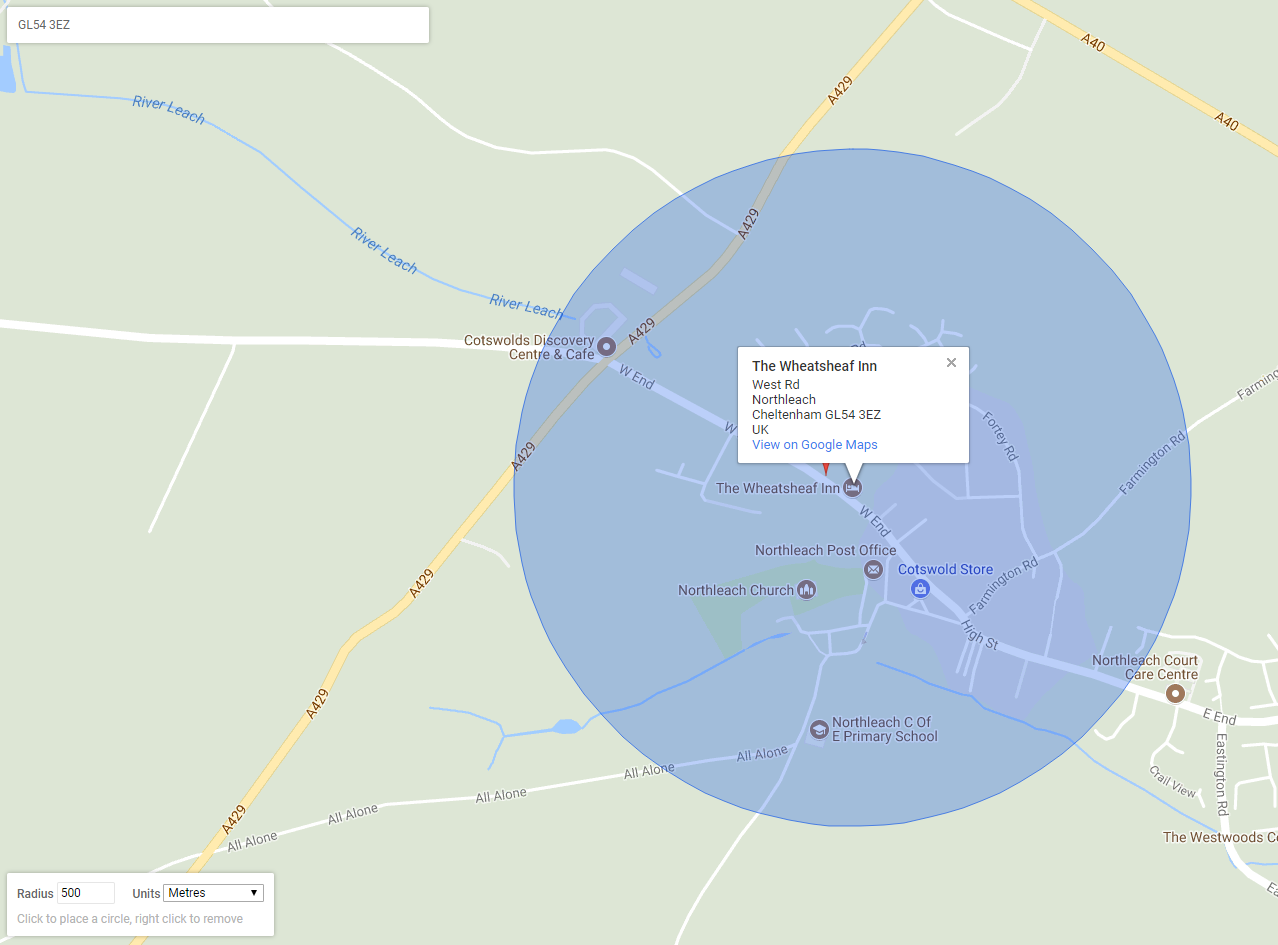THE DISTANCE COVERED BY A DEFIBRILLATOR

The increase in numbers of community defibrillators has led to an expectation they will be activated to a 999 call in every case. This is not true. Community defibrillators will only be activated as long as certain conditions are present, and 999 ambulance operators are instructed to ask relevant questions to ascertain if a defibrillator is needed. In addition, the presence of ‘Activation radii’ or a ‘lone rescuer’, will determine if a defibrillator is needed or can be accessed. Add to this the increasing numbers of reports of the “emergency operator” not knowing the location of code, suggests that the public are not being made aware of the right processes or constraints associated with their community defibrillator.
A 999/112 call must always be undertaken whilst at the patient. The reason for this is the 999 operators will pick up automatically the location of the call, either directly from the land line or via GPS if a modern mobile. Thus, they already know the address, or very likely the location. Do not go to the cabinet, then call 999. Some ‘defibrillator’ cabinets have inaccurate or incomplete instructions that can be misunderstood by the public when stressed, who assume the BT emergency operator can give access codes. Always ask for Ambulance.
- Once the 999 call is received by the ambulance operators, they are tasked with asking 2 questions - is the patient breathing? Is the patient conscious? They use AI now to determine the type and severity of emergency and automatically dispatch an ambulance to the address/location without the need for further questions at this stage. The 'on screen script’ will not allow a process outside of the defined script. In 999/1000 cases this is fine. Sometimes their screen shows no location. They will then ask you if a defibrillator is nearby. Note some 999 operators may say the defib is not visible to them. This is because it is flagged as ‘out of use’ or ‘not available’at this point in time. This does not mean it is not registered.
- They will then tell the caller how to undertake CPR - this is a requirement within 60 seconds of the call - and if it is determined a defibrillatoris required, where the nearest active one is and how to get access (which may not be the one you are aware of). This shortens response times, and also stops unnecessary use of defibrillators.
- What they cannot do, without some searching, is to take a second 999 call from the defibrillator cabinet location and allocate it to an existing 999 call from a different (original) location. Thus, delays occur where a second 999 ambulance operator is trying to find the first 999 call, and seeing if a defibrillator had already been allocated, or if it was required. As an added complication, if the defibrillator is not needed, or not available, the location and code information does not appear on the 999 operator's screen, and so they cannot relay this to the caller. 111 calls do not have access to the defibrillator information as these are not ambulance call centres, but commercially provided services for non-urgent cases. If a patient is unconscious call 999 not 111.
- Sometimes the 999 call does not go to the local ambulance service, particularly in border areas or very busy periods, but instead goes to the next available call handler from an adjacent ambulance service, or even the police, then this service would not know of the location of the defibrillator, or the code to get access if locked. They may ask if a defibrillator is nearby (ie within 400m, not 2 miles!).
- If you are on your own with the patient, you will not be sent to fetch the defibrillator, but stay doing CPR until help arrives. Your community may wish to consider a VETS scheme of volunteers (contact CHT for information). Also if an ambulance is close enough to the incident and can get there faster than you would be able to get to the defibrillator and back, you will also not be sent to the defibrillator. This does not mean the defibrillator is not available or not registered, just not appropriate to the situation.
- Finally, there is a thing called Out of Activation Radius. This means that calls are allocated to resources, in this case a defibrillator. Sometimes the emergency is further away from the defibrillator than the local ‘activation radius’. In this case the operator will not know of a defibrillator nearby, and will not activate. Typical activation radii are 200m to 500m, dependent upon ambulance service and geography.
|
AMBULANCE SERVICE AREA |
RADIUS (METRES) |
|---|---|
| SCOTLAND | 500 |
| NORTH WEST | 500 |
| NORTH EAST | 500 |
| YORKSHIRE | 600 |
| EAST MIDLANDS | 500 |
| WEST MIDLANDS | 500 |
| WALES | 500 |
| SOUTH WEST | 400 |
| SOUTH CENTRAL | 500 |
| SOUTH EAST COAST | 400 |
| LONDON | 200 |
| EAST OF ENGLAND | 1600 |
Ambulance services are also covered by Ambulance Quality Indicators. This is the mechanism for monitoring performance.
To comply with the 2017 AQI guidance set by the NHS, the ambulance service cannot record a community defibrillator as counting to the 8-minute Category 1 call target unless the defibrillator is on scene, and the operator has confirmed that the person present is willing to use this if required.
CAT1 calls are heart problems. Under the AQI2017, they can also count the CAT2 calls (stroke, other life-threatening) as meeting an 8-minute response if similarly the defibrillator is on scene and the person attending confirms by positive agreement they are willing to use if required. These AQI may change in the future.
By attending both CAT1 and CAT2 calls, this may result in your community defibrillator being deployed quite frequently.
